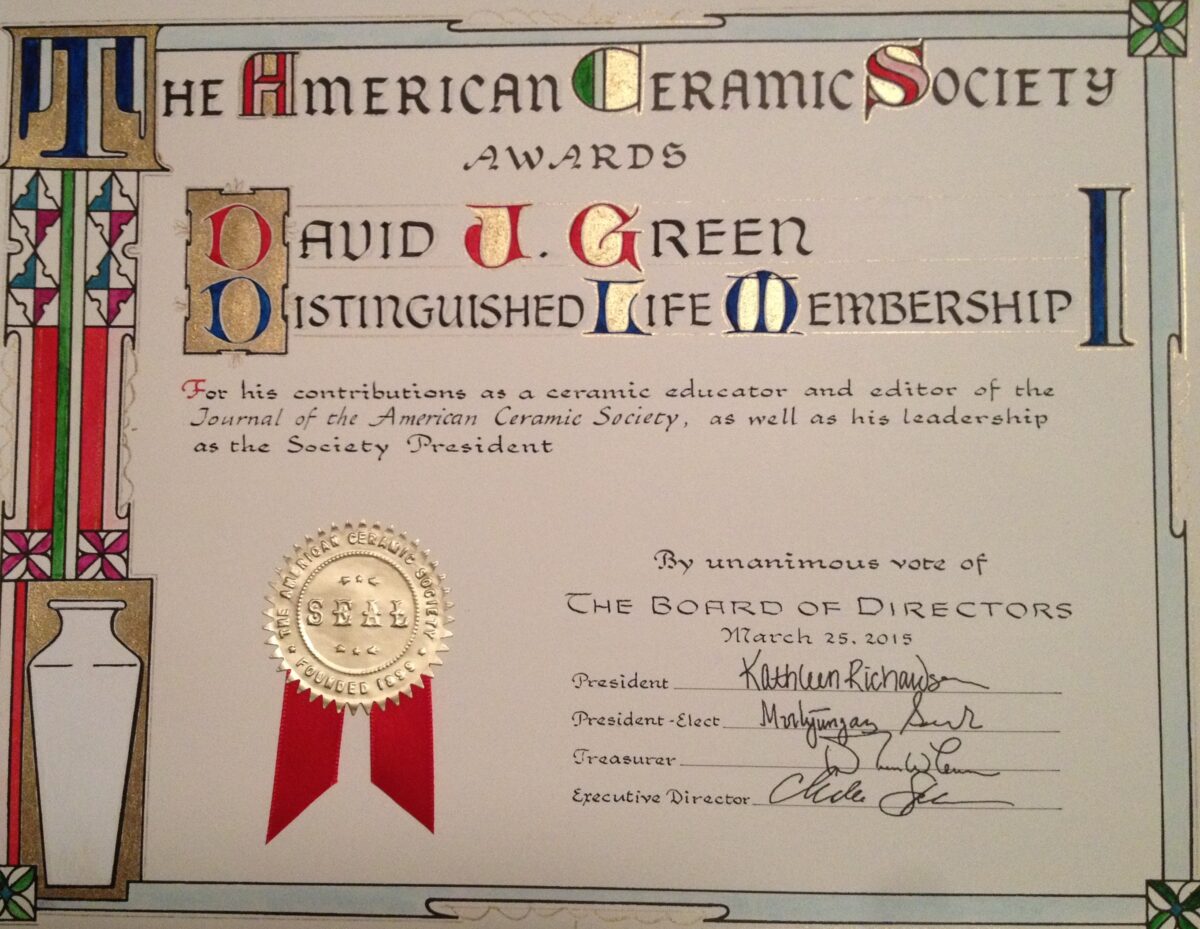
[Image above] Credit: ACerS
The September issue of the ACerS Bulletin is now available—if you haven’t checked it out yet, download it here!
Gracing the cover is one of this month’s feature articles honoring ACerS awardees of 2015, including a two-page spread on the Society’s 2015 Distinguished Life Members: David J. Green, Martin P. Harmer, and Rishi Raj.
The Distinguished Life Member Award is the highest honor accorded to ACerS members. The award recognizes an individual’s eminent contribution to the ceramic and glass profession.
“Each year, the Society presents the title ‘Distinguished Life Member’ to prominent members who have made great advances in ceramic science and technology, made significant contributions to the benefit of the Society, and who have helped mentor and inspire our younger leaders,” says ACerS president Kathleen Richardson in a related news release. “I look forward to seeing what they do in the future, even as we celebrate what they have done so far.”
David Green’s professional career can be directly tied to the close-knit ACerS network—from his first job at CANMET with the Canadian government and the friends he made while there; to working with Fred Lange at Rockwell International, where he worked on space shuttle tile; to joining the Penn State faculty at the urging of Richard (Dick) Tressler.
Green served as ACerS president in 2014, and during his tenure he focused on launching the Ceramic and Glass Industry Foundation, outreach to Central and South American members, and promoting diversity in the Society. He is a Fellow of ACerS, 2005 recipient of the Sosman Lecture Award, and in 2006 became an Alexander von Humboldt Fellow. He serves as senior editor of the Society’s flagship Journal of the American Ceramic Society.
Martin Harmer is Alcoa Foundation Distinguished Professor of materials science and engineering and director of the Center for Advanced Materials and Nanotechnology at Lehigh University (Bethlehem, Pa.). He says the most rewarding aspect of his career is having the opportunity to interact with spectacular colleagues and students, together working to solve tremendous problems in the field.
Harmer’s publication record details significant contributions unraveling grain boundary complexions, microchemical ordering and domain structures in ferroelectrics, and critical characteristics of structural ceramics, among many others. An ACerS member since 1981, Harmer has received an honorable list of Society awards, including ACerS Fellow designation, Richard M. Fulrath Award, Ross Coffin Purdy Award, Robert B. Sosman Memorial Award, Roland B. Snow Award, and W. David Kingery Award.
Rishi Raj earned his Ph.D. from Harvard University, and began working on ceramic materials after researching metals for about a decade. Today he is recognized as a prominent thought leader in the field and is known for his multidisciplinary approach to scientific theory.
Raj has studied oxides and non-oxides to understand a wide range of behavior phenomena, including high-temperature creep, superplasticity, interfaces and amorphous phases and their role in sintering and creep, sintering mechanisms, and polymer-derived amorphous materials. But most recently, he has turned his attention to understanding electric field effects on sintering and defect chemistry, also called “flash sintering.” He is professor of mechanical engineering at the University of Colorado at Boulder. He is also a Fellow of ACerS and a member of the Basic Science Division.
The trio will be inducted as Distinguished Life Members at the ACerS Annual Awards and Honors Banquet, Oct. 5, during MS&T15 in Columbus, Ohio.
Author
Stephanie Liverani
Spotlight Categories
- Society News
Related Posts
Volunteer spotlight: Hyunjun Kim
December 18, 2025
ACerS GOMD history—A look back in time
December 10, 2025



